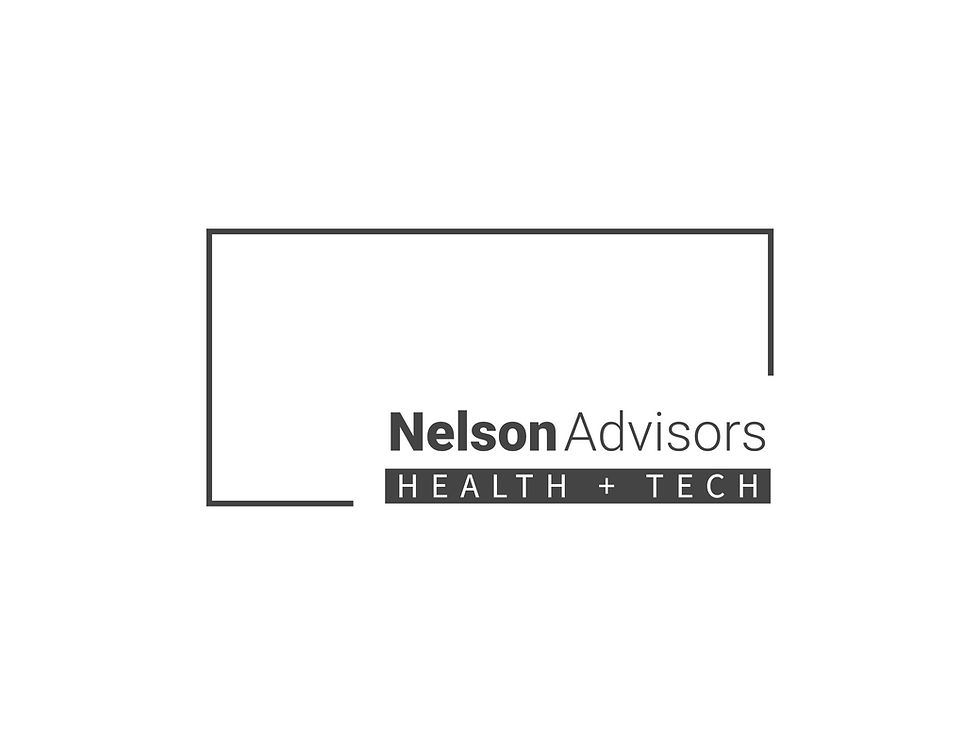Impact of the Venture Capital Liquidity Crunch on HealthTech
- Lloyd Price
- May 3
- 4 min read

The venture capital (VC) liquidity crunch is creating challenges for healthtech growth and digital health adoption, however the impact is nuanced and varies across the sector. Below, we outline how the liquidity crunch is affecting healthtech, its implications for digital health adoption and the broader context.
Impact of the VC Liquidity Crunch on Healthtech Growth
Reduced Funding Availability:
The VC liquidity crunch, characterised by negative net cash flows for VC firms (eg, $32.6 billion in 2024), has led to a more cautious investment environment.
In 2023, global digital health funding dropped significantly from the 2021 peak of $29.1 billion to $12.6 billion, reflecting a broader pullback in VC activity.
This reduction in capital has made it harder for early-stage healthtech startups to secure funding, particularly those without proven track records or clear paths to profitability. Investors are prioritising companies with demonstrable returns on investment (ROI) and clinical validation, with 94% of VCs surveyed in 2023 emphasising ROI as critical.
Focus on Proven Companies:
The liquidity crunch has shifted VC attention to later-stage companies with established traction, leaving early-stage startups struggling. In 2024, seed rounds accounted for 40% of deals, but funding was concentrated in companies with strong histories, particularly those leveraging AI.
This dynamic stifles innovation in nascent healthtech sub-sectors, as risk-averse VCs avoid unproven ventures, potentially slowing the development of transformative technologies.
Pressure on Exits:
A weak exit environment, with muted IPO activity and slowed mergers and acquisitions (M&A), exacerbates liquidity challenges. In 2024, healthtech exits were down, and publicly traded healthtech stocks underperformed, forcing VCs to extend investment horizons to 10-15 years.
Without viable exit options, VCs face pressure from limited partners (LPs) to deliver returns, which reduces their willingness to invest in high-risk, long-horizon healthtech ventures.
Regional Variations:
In India, a VC expert highlighted a persistent funding crisis in healthtech, noting that even significant investments (e.g., ₹10,000 crore) are insufficient to meet sector demands, suggesting localised liquidity constraints.
In Europe, smaller deal sizes and stricter regulations further limit funding, with European healthtech attracting €14.2 billion in 2022, a 27% increase but still lagging behind the U.S.
Impact on Digital Health Adoption
Slower Adoption Due to Funding Constraints:
Digital health solutions, such as telemedicine, AI-driven diagnostics, and wearable technologies, often require significant upfront investment for development, clinical validation, and market penetration. Reduced VC funding can delay product launches and scaling, slowing adoption.
For example, startups addressing workforce challenges (e.g., AI for clinician note automation) are seen as high-potential but face adoption hurdles if funding dries up before they can demonstrate ROI.
Buyer Fatigue and ROI Demands:
Healthcare buyers, including health systems and payers, are increasingly skeptical of digital health solutions due to “point solution fatigue” and budget constraints. The liquidity crunch amplifies this, as underfunded startups struggle to prove value, leading to slower adoption.
VCs report that buyers prioritise solutions with 2-5x ROI and payback periods of 12-18 months, creating a high bar for digital health companies to gain traction.
Bright Spots Amid Challenges:
Despite the crunch, certain digital health sub-sectors, particularly AI-driven solutions, are seeing robust adoption. In 2024, AI biopharma captured $5.6 billion in VC investment, a 300% increase from 2023, driven by solutions like AI documentation (e.g., Suki) and coding (e.g., CodaMetrix).
The COVID-19 pandemic accelerated digital health adoption (e.g., telemedicine, remote monitoring), and this momentum persists in areas with clear cost-saving potential, such as care delivery technologies estimated to save $270 billion in the U.S. if fully adopted.
Counterpoints and Resilience
Optimism Among Some VCs:
Not all VCs are deterred by liquidity challenges. Some, like Bessemer Venture Partners, argue that digital health’s long investment horizons are understood by LPs, and the sector’s potential for cost reduction and improved outcomes sustains interest.
In 2024, healthcare VC funding reached $23 billion, up from $20 billion in 2023, indicating resilience despite liquidity pressures.
Alternative Liquidity Solutions:
VCs are exploring creative strategies, such as net asset value (NAV) loans and continuation vehicles, to manage liquidity and support portfolio companies, potentially mitigating the crunch’s impact.
M&A activity, while slowed, is seen as an opportunity for stronger healthtech companies to acquire weaker competitors, consolidating the market and driving adoption of proven solutions.
Market Corrections as Opportunities:
Some VCs view economic downturns as beneficial, allowing mission-driven healthtech startups to thrive by focusing on efficiency and value. This could accelerate adoption of high-impact solutions in the long term.
Critical Perspective
While the liquidity crunch is undeniably straining healthtech, it’s not a blanket barrier to growth or adoption. The sector’s challenges are partly structural, healthcare’s regulatory complexity, long sales cycles, and buyer skepticism predate the crunch.
The focus on AI and proven companies suggests a market correction rather than a collapse, weeding out overhyped ventures (eg Babylon, Pear Therapeutics) and rewarding those with tangible impact. However, the crunch risks exacerbating health inequities if funding concentrates on scalable, profitable solutions at the expense of underserved populations or innovative but unproven technologies. Policymakers and VCs must balance short-term ROI demands with long-term societal benefits.
The VC liquidity crunch is constraining healthtech growth by limiting funding for early-stage startups and increasing pressure for quick returns, which can slow digital health adoption, particularly for solutions lacking immediate ROI. However, resilient subsectors like AI-driven healthtech and established companies continue to attract investment and drive adoption. The crunch is a hurdle, not a stopper, but its impact depends on how VCs, startups, and buyers navigate the evolving landscape.
Nelson Advisors > HealthTech M&A
Nelson Advisors specialise in mergers, acquisitions and partnerships for Digital Health, HealthTech, Health IT, Healthcare Cybersecurity, Healthcare AI companies based in the UK, Europe and North America. www.nelsonadvisors.co.uk
We work with our clients to assess whether they should 'Build, Buy, Partner or Sell' in order to maximise shareholder value and investment returns. Email lloyd@nelsonadvisors.co.uk
Nelson Advisors regularly publish Healthcare Technology thought leadership articles covering market insights, trends, analysis & predictions @ https://www.healthcare.digital
We share our views on the latest Healthcare Technology mergers, acquisitions and partnerships with insights, analysis and predictions in our LinkedIn Newsletter every week, subscribe today! https://lnkd.in/e5hTp_xb
#HealthTech #DigitalHealth #HealthIT #NelsonAdvisors #Mergers #Acquisitions #Growth #Strategy #Cybersecurity #HealthcareAI #Partnerships #NHS #UK #Europe #USA #Canada
Nelson Advisors
Hale House, 76-78 Portland Place, Marylebone, London, W1B 1NT
Contact Us
Meet Us
Digital Health Rewired > 18-19th March 2025
NHS ConfedExpo > 11-12th June 2025
HLTH Europe > 16-19th June 2025
HIMSS AI in Healthcare > 10-11th July 2025




















































Comments